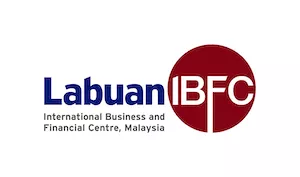In the final of a two-part series (October and December), captive insurance stalwart, Callum Beaton talks about the trends of the captive industry and what it entails
Captive insurance is still a forward-looking concept in the region and as Callum Beaton pointed out in the October issue of Insight Plus, Asia is "the big growth area" for captives and it is a matter of "be part of it or miss out".
In the final part of the series (read the first part here) he talks to us about the latest industry developments and the impact of these changes in the global tax landscape.
IP: What are the latest developments in the industry, e.g. if micro captive is taking off and what other trends in the industry?
CB: I think one has to step back and ask what the industry is; the insurance sector is notorious for reinventing terms to describe the same thing. To me, the term micro-captive is synonymous with ultra-low risk ventures, in some cases arguably uninsurable, and tax benefits afforded particularly in certain US states. Personally, I don't consider it to have earned a full and proper place in the captive vocabulary.
The same may apply to Insurance Linked Securities although they are significantly favoured in Bermuda and Guernsey at the present time. Do they represent a development in the captive sector? On balance yes, because the use of these securities offers a mechanism, through incorporated cells, to facilitate investment directly into insurance risk. The risk, such as it is, is fully collateralised and, ultimately an investor will either receive enhanced returns or lose all capital invested. Such approaches are therefore for sophisticated investors and not individuals seeking greater returns. What does present is an interesting means to introduce capacity on high value specific risks and a convergence of investment and insurance markets to provide delivery.
IP: Do you think the changes in global tax landscape and this move towards tax transparency will change the landscape of captive insurance?
CB: It should not, but undoubtedly will. Direct premium taxes have, in many territories, removed the immediate benefits afforded by the captive writing deductible programmes, but these taxes are payable by insured parties based on the situation of risk. Generally, captives are tax free but tax is payable on distribution of profit to the parent company by the parent company. In theory, there is scope to manipulate reserves to retain funds in the captive longer than may be necessary but increasing audit scrutiny serves to ensure that reserves, considered by captive boards, are proportionate to the risks carried. There is no logical reason why a captive should be adversely affected by tax transparency and many captives owned by public companies are named in annual reports and in any credible captive jurisdiction, there will be regulatory requirement, at the very least, to provide full detail as to beneficial ownership to regulators. Consequently, I believe that the global changes will impact but by perception alone as captives are not secret vehicles but credible means of assuming risk in a cost-effective manner.
IP: Do you think Protected Cell Companies (PCC) would be considered as a cost-efficient alternative to Captives in Asia and as such assist in the take-up of self-insurance?
CB: I will turn the question around: why wouldn't they be? Cells in PCCs have, in the last decade presented the major growth area for delivery of captive insurance techniques. Once established, the promoter assumes director/management responsibilities and provides services to the cell owner. Costs are lower, and so they should be. However, I have previously described the PCC as the "offshore trust of the insurance world"; it is therefore a matter for a would-be owner to determine whether they are happy with the concept or not.
The content of this article is intended to provide a general guide to the subject matter. Specialist advice should be sought about your specific circumstances.

